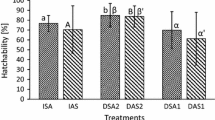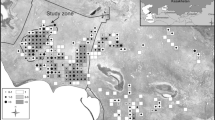Abstract
A recently favored hypothesis is that duetting in birds has a mate-guarding function: a male responds vocally to his partner’s song, thereby forming a duet that repels males who are attracted to her song. Previous studies have not provided unambiguous tests of the mate-guarding hypothesis because: (1) the probability of a male answering his partner’s song has not been shown to increase specifically when the female is fertile, and (2) the probability of a male answering his partner’s song has not been assessed separately from simply a higher song initiation rate. We investigated extra-pair paternity, mate-guarding, and duetting in the socially monogamous Australian magpie-lark (Grallina cyanoleuca). DNA fingerprinting revealed that 3% of young were the result of extra-pair paternity, and we found that males guarded fertile females by staying close to them. However, males did not initiate songs at a higher rate when females were fertile and actually reduced their probability of replying to female song during this period. We conclude that although male magpie-larks did guard fertile females in an attempt to prevent extra-pair copulations, they did not use duetting for this purpose.
Similar content being viewed by others
Author information
Authors and Affiliations
Additional information
Received: 10 May 1999 / Received in revised form: 27 September 1999 / Accepted: 2 October 1999
Rights and permissions
About this article
Cite this article
Hall, M., Magrath, R. Duetting and mate-guarding in Australian magpie-larks (Grallina cyanoleuca) . Behav Ecol Sociobiol 47, 180–187 (2000). https://doi.org/10.1007/s002650050009
Issue Date:
DOI: https://doi.org/10.1007/s002650050009




